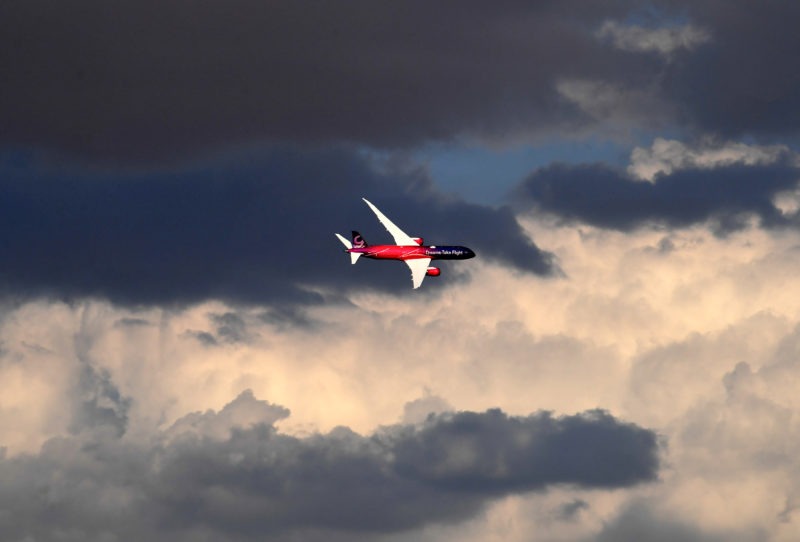Emirates slims Boeing purchase plans in fleet overhaul
Emirates Airline has 156 aircraft ordered from Boeing, compared to 196 previously in both firm orders and initial agreements (KARIM SAHIB)
Dubai (AFP) – Emirates Airline, the Middle East’s biggest carrier, on Wednesday slimmed down its purchasing plans with Boeing, shortly after cutting orders with Airbus as tough conditions force a review of its fleet and ambitions.
The Dubai-based airline, which has seen modest profits in recent years, signed a firm order for 30 Boeing 787 Dreamliners worth $8.8 billion at list price — 10 aircraft less than the commitment it made two years ago.
Emirates also reduced a mammoth contract for 156 Boeing 777X it signed six years ago to just 126 aircraft, amid delays in delivering the new long-range 777X aircraft.
“Emirates reduced its 777X order of 156 to 126 and substituted them with the Dreamliners,” Emirates president Tim Clark told a news conference at the Dubai Airshow.
The restructuring means that the carrier now has just 156 aircraft ordered from Boeing, compared to 196 previously in both firm orders and initial agreements, an airline spokeswoman confirmed to AFP.
Stan Deal, CEO of Boeing Commercial Airplanes, said the company was “grateful to the trust by the Emirates”.
“We are proud to officially welcome the Emirates to the 787 family.”
On Monday, Emirates signed a $16 billion firm order for 50 Airbus A350-900 widebody aircraft, but the deal replaced a bigger commitment signed earlier this year, as it reorganises its fleet after cutting orders of the A380 superjumbo.
Its move earlier this year to axe 39 aircraft from its total A380 orders prompted Airbus to pull the plug on the costly plane, which airlines have struggled to fill to its capacity of 500-850 people.
At the time, Emirates said it would buy smaller A330 and A350 models instead in a sale worth $21.4 billion, but the deal struck on Monday fell well short of that.
– Profits under pressure –
Emirates is facing slowing economies in its home Gulf region and stagnant tourism numbers to its glitzy base of Dubai.
In the last full year, its net profit dived 69 percent to just $237 million due to high oil prices and currency fluctuations, although earlier this month it said half-year profits nearly tripled thanks to a drop in operating costs.
FlightGlobal’s air transport editor David Kaminski-Morrow said the scaled-back orders “reflect a more modest approach to expansion and a change in tactics from the airline”.
Despite a flurry of orders, Emirates is only making a net increase of about 50 aircraft he said, and it is moving away from the large A380 and Boeing 777 planes towards smaller models like the A350-900 and 787-9.
“This is indicative of a more conservative approach to capacity and a desire to introduce greater flexibility in its fleet,” he told AFP.
Despite the cuts, Emirates represented the lion’s share of contracts announced at the Dubai Airshow, with orders worth nearly $25 billion awarded to the two global aircraft makers.
Centre stage at the show were Boeing’s twin troubles — delays in delivery of the new 777X long-range aircraft and the crisis surrounding the 737 MAX, which has been grounded worldwide after two crashes that resulted in 346 deaths.
Emirates in 2013 signed a $76-billion contract for 150 Boeing 777X twin-engine aircraft, powered by GE’s new GE9X engine, in what was the single largest order by value in the history of US commercial aviation. The order was later increased to 156 planes.
The 777X was originally scheduled to take off on its first test flight this summer, however its development has been slowed by issues with the engine and Boeing has pushed back the timeframe to early 2021.
Emirates said in a statement that for the 777X, it “will enter into discussions with Boeing over the next few weeks on the status of deliveries”.
Disclaimer: Validity of the above story is for 7 Days from original date of publishing. Source: AFP.


